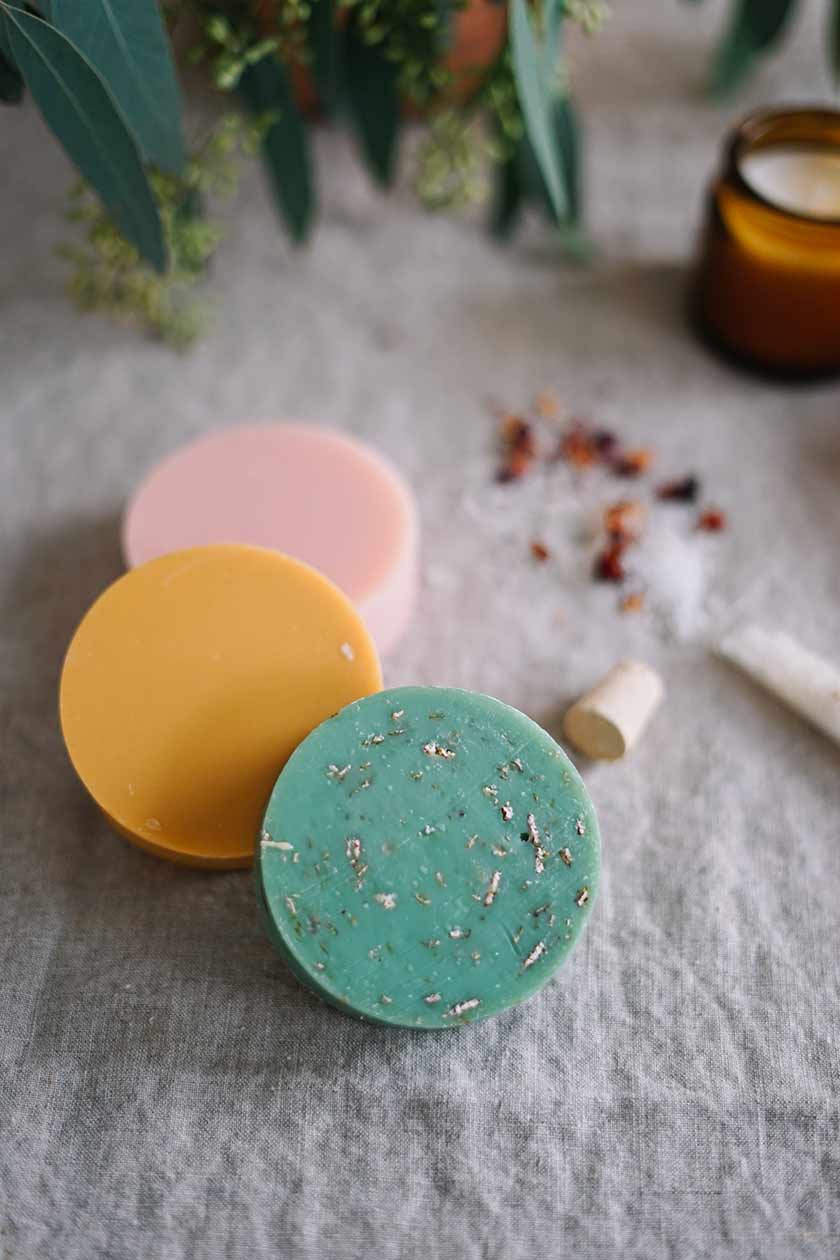As the most commonly produced vegetable oil, it is incredibly difficult to avoid palm oil. We’ve shared a bit about whether we think palm oil can be sustainable or not (and thankfully more resources have emerged since then, which we’ll include in a post soon), but our verdict still stands: in most cases, no. Like basically everything when it comes to trying to be more eco friendly, this is a complex issue steeped in corporate greed, power struggles, social and environmental injustices, politics and more. So it’s incredibly difficult to determine where your palm oil comes from and what it took to get to you. Bottom line is, over the past five years or so of making a real effort to avoid the use palm oil, I’ve learned one thing: avoiding it is much easier than finding it sustainably.

image from one of our most popular blog posts on palm-free soap brands
how to avoid the use of palm oil
learn the names of palm oil
Palm oil is an incredibly versatile ingredient which is one reasons it’s so widely produced. It can show up in foods to household to personal care products. The oil is formulated in the way that serves the product best, so it comes with different chemical names. I’ve added a list of names in the graphic below, and I recommend visiting wwf.org to learn more.
check the ingredients in your pantry + freezer
If you’ve ever tried to avoid consuming a common allergen like soy or gluten, you know what it’s like to read every ingredient listed on every product you come across. It’s tedious in the beginning, but you quickly get used to it and it’s honestly a good practice for improving your overall wellness. The most surprising aspect is noticing that like gluten and soy, palm oil seems to be in everything. A quick audit of your current pantry will familiarize you with some of the most common offenders: peanut butter, processed baked goods, candy, frozen meals and desserts, chocolate items, and more. Knowledge is power!
check the ingredients in your vanity
Palm oil is a common ingredient in cosmetics and bodycare products, but it is trickier to spot than when in food. This is because it’s usually listed as whatever form its in–see graphic below. To make matters worse, sometimes these names can be used to refer to vegetable oils or oil blends other than palm oil, so you can’t always tell without contacting the company. I know this is frustrating, so when you’re just getting started, I’d suggest focusing on learning the names, checking the products you use regularly, and just becoming aware of this industry’s connection to the use of palm oil. Baby steps!
shop the perimeters
You may have heard the advice to “shop the perimeters” from health food blogs. It basically means to choose fresh food whenever possible, avoiding the middle aisles that are comprised primarily of processed snacks and fake foods. If this is new for you (as it was to me having grown up on a 100% processed American diet), I want to emphasize awareness again. Reflect on which snacks you gravitate toward the most, and check whether they have palm oil. Committing to reducing my use of palm oil immediately meant ditching two of my processed faves: Oreo’s and Reese’s. Five years ago, these were my favorites! But these products are linked to deforestation and other negative effects of palm oil production in big ways (see here and here) so I felt icky supporting them. And I truly don’t miss them… I got better at baking and make tastier treats anyways.
chat with friends!
No, I don’t mean preach to friends (unless you hand me a drink). The #1 thing that helped me quit palm oil and really strengthened my interest in sustainability in general was meeting a friend who had also done her research and realized that it was something she wanted to actively avoid. (I’ve since met, like, one more person.) Like any other common interest, it’s nice to have those aha moments with a friend. So find people you can go on the journey with, whether it’s a friend you suspect would love to hear about what you’ve learned, or seeking out a group with the same passions you have.

your two cents